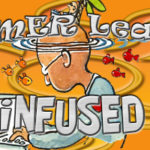January 26, 2016
8 Digital Tools for Writing
Even though I’m a tech teacher by profession and a geek by desire, my default approach to writing is pen-and-paper. It’s got to do with grabbing a wrinkled piece of paper and jotting a note that I woke up thinking about or shuffled through my brain on a long commute. Something about pen scratching on paper or the even flow of the letters beneath my hand helps me think. But, by the time I’m ready to unravel whatever hijacked my attention, I’ve either forgotten what I meant or lost the note.
For the new year, I’m improving my productivity by going paperless. Before beginning any writerly activity, I’ll take a moment to decide if there’s a digital solution that not only saves me time, but adds less trash to our throw-away society. Here are eight ideas I’ve come up with:
 Note-taking
Note-taking
Use one of the many digital note-takers that live as apps on my phone and iPad. It can be as simple as iPhone’s expanded Notes or as varied as the integration of text, images, photos, and videos in Notability.
Digital annotator
Instead of printing out agendas and rosters, I’ll load them onto my phone or iPad and digitally annotate them with the basic simplicity of Adobe Acrobat (free) or the fully-featured approach of iAnnotate (fee).This includes conference schedules and submittals at my critique group.
 Brainstorming
Brainstorming
There are so many great tools that make brainstorming with colleagues simple. And, if you’re planning your next story, brainstorming is a great way to get the basics down before fleshing out the plot. Start with the title in the center bubble of the canvas, add characters, setting, and plot. Put the details in as you figure them out and drag-drop them to their right place. You can do it as a timeline or a mindmap. Many brainstorming tools are infinite screens so you can pinch-and-drag to put as much information as you’d like on a canvas.
If you click the links for ‘timeline’ and ‘mindmap’, they take you to a list of popular, mostly-free options for either tool.
White Board
If you like to draw out your thoughts, any of the free or fee digital white boards are perfect. Draw out your ideas, add colors and text, with maybe a lined paper or grid background. Most are simple, uncluttered, and focus on getting your ideas on paper without the confusion of nested tools A few are collaborative and most can be shared with others. AWW is a simple, functional start, but there are lots more options here.
Voice notes
This is one of my favorites because it lets you continue whatever else you’re doing while saving that elusive, brilliant idea. One of my favorites is iTalk–a big red button on your screen that shouts ‘Print to Record’. There are other great options for phones here.
 Mapping
Mapping
There are a wide variety of mapping tools that let you track your characters and setting geographically around the planet. Google Earth is my long-time favorite, but Google Maps and Waze are just as good. These have become critical to my plotting and scene development, preventing me from putting a bistro or bus stop in the middle of the Hudson River.
Browser
Of course, most writers now use the internet to research. That goes through a browser. My favorite is Chrome, but it used to be Firefox (until that started crashing all the time). The only time I was a fan of IE was the pre-Firefox days.
Word processing
A digital writing list wouldn’t be complete without adding the tool that turns data into a story. Word processors include MS Word, Google Docs (not great for long manuscripts or highly-visual non-fiction), and fancier tools like Scrivener. All of these make it easy to edit your words, move parts around, and back-up your manuscript so you don’t lose it if the house floods.
These are seven that come to mind as I consider how my writing couldn’t happen without digital tools. How about you? What do you use that wasn’t around when your mom was writing her stories?
More on digital writing:
6 Tips That Solve Half Your Tech Writing Problems
10 Digital Tricks to Add Zip to Your Roadtrip
How to Write a Novel with 140 Characters
Jacqui Murray is the author of the popular Building a Midshipman, the story of her daughter’s journey from high school to United States Naval Academy. She is the author/editor of over a hundred books on integrating tech into education, adjunct professor of technology in education, webmaster for four blogs, an Amazon Vine Voice book reviewer, a columnist for TeachHUB, Editorial Review Board member for Journal for Computing Teachers, monthly contributor to Today’s Author and a freelance journalist on tech ed topics. You can find her book at her publisher’s website, Structured Learning.






